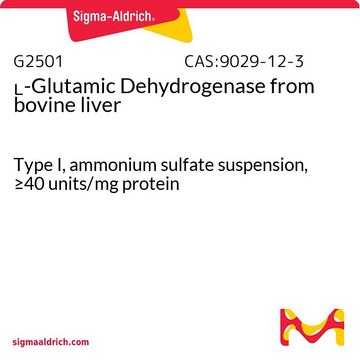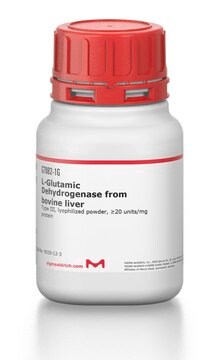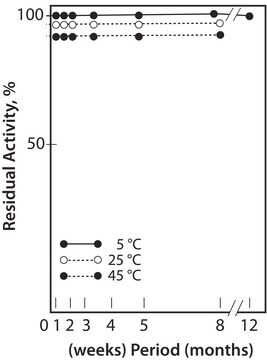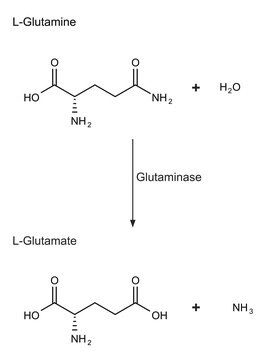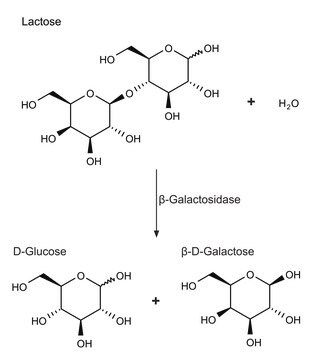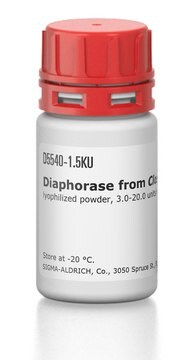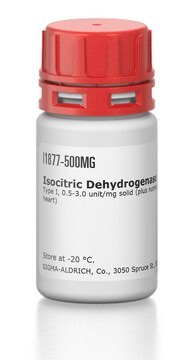G2626
L-Glutamic Dehydrogenase from bovine liver
Type II, 50% glycerol solution, ≥35 units/mg protein
Synonym(s):
L-GLDH, L-Glutamate:NAD[P]+ Oxidoreductase (deaminating), Glutamate Dehydrogenase from bovine liver
About This Item
Recommended Products
biological source
bovine liver
Quality Level
type
Type II
form
glycerol solution (50%)
specific activity
≥35 units/mg protein
mol wt
310-350 kDa
UniProt accession no.
shipped in
wet ice
storage temp.
2-8°C
Gene Information
cow ... GLUD1(281785)
Looking for similar products? Visit Product Comparison Guide
Application
Biochem/physiol Actions
The bovine enzyme is characterized by three sets of properties:
- It has a reversible concentration-dependent association, producing higher molecular weight forms.
- Forms tight enzyme-reduced coenzyme-substrate ternary complexes whose rates of dissociation modulate the steady-state reaction rates.
- Exhibits a wide variety of effects from the binding of any of a number of nucleotide modifiers.
L-glutamic dehydrogenase catalyzes the conversion of glutamate to α-ketoglutarate.
Unit Definition
Physical form
Analysis Note
substrate
Storage Class Code
12 - Non Combustible Liquids
WGK
WGK 1
Flash Point(F)
Not applicable
Flash Point(C)
Not applicable
Choose from one of the most recent versions:
Already Own This Product?
Find documentation for the products that you have recently purchased in the Document Library.
Customers Also Viewed
Articles
For use as a marker in SDS-PAGE; Albumin from chicken egg white, For use as a marker in SDS-PAGE; L-Lactic Dehydrogenase from rabbit muscle, Type XI, lyophilized powder, 600-1,200 units/mg protein
Our team of scientists has experience in all areas of research including Life Science, Material Science, Chemical Synthesis, Chromatography, Analytical and many others.
Contact Technical Service